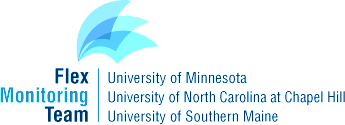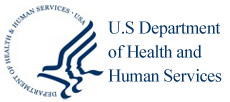- Announcing the 2030 Census Disclosure Avoidance Research Program
- CMS: Medicare Program; Hospital Inpatient Prospective Payment Systems for Acute Care Hospitals and the Long-Term Care Hospital Prospective Payment System and Policy Changes and Fiscal Year 2026 Rates; Requirements for Quality Programs; and Other Policy Changes; Correction
- CMS: Medicare Program; Hospital Inpatient Prospective Payment Systems for Acute Care Hospitals and the Long-Term Care Hospital Prospective Payment System and Policy Changes and Fiscal Year 2026 Rates; Requirements for Quality Programs; and Other Policy Changes; Correction
- CMS: Medicare and Medicaid Programs; Contract Year 2026 Policy and Technical Changes to the Medicare Advantage Program, Medicare Prescription Drug Benefit Program, Medicare Cost Plan Program, and Programs of All-Inclusive Care for the Elderly; Correction
- CMS: Medicare and Medicaid Programs; Contract Year 2026 Policy and Technical Changes to the Medicare Advantage Program, Medicare Prescription Drug Benefit Program, Medicare Cost Plan Program, and Programs of All-Inclusive Care for the Elderly; Correction
- CMS: Medicare Program; Prospective Payment System and Consolidated Billing for Skilled Nursing Facilities; Updates to the Quality Reporting Program for Federal Fiscal Year 2026
- CMS: Medicare Program; FY 2026 Hospice Wage Index and Payment Rate Update and Hospice Quality Reporting Program Requirements
- Public Inspection: CMS: Medicare Program: Fiscal Year 2026 Hospice Wage Index and Payment Rate Update and Hospice Quality Reporting Program Requirements
- Public Inspection: CMS: Medicare Program: Prospective Payment System and Consolidated Billing for Skilled Nursing Facilities; Updates to the Quality Reporting Program for Federal Fiscal Year 2026
- CMS: Request for Information; Health Technology Ecosystem
- CMS: Medicare and Medicaid Programs; CY 2025 Payment Policies Under the Physician Fee Schedule and Other Changes to Part B Payment and Coverage Policies; Medicare Shared Savings Program Requirements; Medicare Prescription Drug Inflation Rebate Program; and Medicare Overpayments; and Appeal Rights for Certain Changes in Patient Status; Corrections and Correcting Amendment
- CMS: Medicare and Medicaid Programs; CY 2025 Payment Policies Under the Physician Fee Schedule and Other Changes to Part B Payment and Coverage Policies; Medicare Shared Savings Program Requirements; Medicare Prescription Drug Inflation Rebate Program; and Medicare Overpayments; and Appeal Rights for Certain Changes in Patient Status; Corrections and Correcting Amendment
- VA: Staff Sergeant Fox Suicide Prevention Grant Program Funding Opportunity
- State: 60-Day Notice of Proposed Information Collection: J-1 Visa Waiver Recommendation Application
- HHS: Request for Information (RFI): Ensuring Lawful Regulation and Unleashing Innovation To Make American Healthy Again
Volunteer Opportunity for Dental Professionals in Pennsylvania
The Remote Area Medical (RAM) Volunteer Corps is hosting a clinic on March 25th and 26th at Penns Valley Elementary Intermediate School in Spring Mills, PA. Free dental, vision, and medical services will be provided on a first-come, first-serve basis. RAM is seeking volunteers to work the event. They offer first-come, first-serve free lodging for out-of-town providers, and meals are provided to volunteers during the clinic day.
Click here to view the event flyer.
Click here for more volunteer information.
Celebrate National Children’s Dental Health Month
February is National Children’s Dental Health Month! This month-long national health observance brings together thousands of dedicated professionals, healthcare providers, and educators to promote the benefits of good oral health to children, their caregivers, teachers and many others. Check out the American Dental Association website for posters, postcards, flyers, and activity sheets.
Pennsylvania Report Addresses Rural Oral Health Access Issues

The Pennsylvania Legislative Budget and Finance Committee (LBFC) released a report that analyzed the state of dentistry in rural Pennsylvania and found that the state has a growing problem with access to dental care. To combat those trends and problems, the report suggests some financial changes, as well as expanding technological use.
PCOH was excited to assist the LBFC on this report as the lead stakeholder.
FAQs Published on SEP for Consumers Losing Medicaid Coverage due to Medicaid Unwinding

The Centers for Medicare & Medicaid Services (CMS) has announced a Marketplace Special Enrollment Period (SEP) for qualified individuals and their families who are losing Medicaid coverage due to the end of the “continuous enrollment condition” – also known as “unwinding.”*
This SEP, referred to as the “Unwinding SEP,” will allow individuals and families in states served by HealthCare.gov and who are impacted by unwinding, to enroll in Marketplace coverage. CMS will update Marketplace enrollment platforms (HealthCare.gov and Direct Enrollment/Enhanced Direct Enrollment pathways) so that Marketplace-eligible consumers who submit a new application or update an existing application between March 31, 2023 and July 31, 2024 and attest that they have lost Medicaid or CHIP coverage at any point during this time period are eligible for this Unwinding SEP. Consumers who are eligible for the Unwinding SEP will have 60 days after they submit or update their application to select a plan with coverage that starts the first day of the month after they select a plan. For example, if someone selects a plan on August 20, their coverage will start on September 1.
To read the FAQs about this new SEP, click the link. Medicaid Unwinding SEP FAQs
As a reminder, millions of consumers may soon be eligible for Marketplace coverage, and you should be ready to assist them! Many consumers who lose Medicaid coverage will be directed to apply for coverage through the Marketplace. Redeterminations can begin as early as February 1 with the first terminations effective April 1. People who receive advance notice of an April 1 termination may start enrolling in Marketplace coverage immediately to ensure continuity of coverage.
The Marketplace will continue to share updates and information for assisters throughout the coming months regarding the Unwinding Period. To learn more, see this CMS Informational Bulletin.
New CAH Coordination of Care Brief Released

The Flex Monitoring Team released a new policy brief, Care Coordination and Community Partnerships for Cancer Care in Critical Access Hospitals. This brief presents data from a survey of 135 CAHs across the U.S. and provides specific data on care coordination services provided in CAHs and staff providing these services, as well as information related to CAH partnerships with community organizations in community cancer initiatives.
Data Updates Announced by the Pennsylvania Data Center

New Brief Highlights Changes to Urban Areas in Pennsylvania
The U.S. Census Bureau released an updated list of urban areas, boundary maps and other related material this month. Read more on our Research Briefs page or click here to go straight to the brief.
Census Bureau Updates
- American Community Survey 2017-2021 5-Year Public Use Microdata Sample (PUMS) Released
The 2017-2021 ACS 5-year PUMS were released this month. PUMS files allow data users to create custom estimates and tables that are not available through ACS pretabulated data products. Click here to explore options for accessing the latest data.
- New ACS Data Products Available for the 118th Congress
The Census Bureau released new social, economic, housing, and demographic statistics for the 118th Congress. The four Data Profiles are available for all 435 congressional districts and are available in the Census Bureau’s FTP site and through a web-based lookup tool on the ACS website.
- American Community Survey Migration Flows
The U.S. Census Bureau released new data tables from the 2016-2020 American Community Survey (ACS) highlighting the geographic mobility of people. Click here to learn more.
- Census Bureau and AmeriCorps Released the Civic Engagement and Volunteering Supplement
Click here to access the 2021 Current Population Survey (CPS), Civic Engagement and Volunteering (CVC) Supplement Microdata File. This is the most robust longitudinal survey about volunteerism and other forms of civic engagement in the United States.
Federal Administration Proposes New Rules to Expand Access to Birth Control Coverage Under the Affordable Care Act

The U.S. Department of Health & Human Services (HHS) and the Departments of Labor and the Treasury (Departments) proposed a rule to strengthen access to birth control coverage under the Affordable Care Act (ACA). Under the ACA, most plans are required to offer coverage of birth control with no out-of-pocket cost. To date, millions of women have benefited from this coverage. Today’s rule proposes to expand and strengthen access to this coverage so that all women who need or want birth control are able to obtain it. The action is the latest effort by the Biden-Harris Administration to bolster access to birth control at no cost.
The ACA and its implementing regulations guarantee coverage of women’s preventive services, including birth control and contraceptive counseling, at no cost for women who are enrolled in group health plans or individual health insurance coverage.
The proposed rules are part of the Biden-Harris Administration’s commitment to ensuring access to reproductive health care and follows earlier action to expand access to birth control and family planning services. HHS, the Department of Labor, and the Department of the Treasury previously convened a meeting with health insurers and called on the industry to commit to meeting their obligations to provide contraceptive coverage as required by the ACA. The Departments also issued guidance to clarify protections for birth control coverage under the ACA following multiple states’ efforts to restrict access to contraception in the wake of the Supreme Court’s decision in Dobbs v. Jackson Women’s Health Organization. HHS also announced nearly $3 million in new funding to bolster training and technical assistance for the nationwide network of Title X family planning providers.
- To review or comment on the proposed rules during its 60-day public comment period, visit the Federal Register.
- For more information on the proposed rules, consult the fact sheet available at https://www.cms.gov/newsroom/fact-sheets/coverage-certain-preventive-services-under-affordable-care-act-proposed-rules.
- In addition, HHS also recently released a report entitled: “Marking the 50th Anniversary of Roe: Biden-Harris Administration Efforts to Protect Reproductive Health Care,” which outlines the actions HHS has taken in the face of the health crisis precipitated by the Dobbs decision.
The full report can be read at https://www.hhs.gov/sites/default/files/roe-report.pdf – PDF.
Emergency Allotments to End in March for SNAP Households
From the Pennsylvania Department of Human Services (DHS)
Starting in March, recipients of Supplemental Nutrition Assistance Program (SNAP) benefits will no longer receive the Emergency Allotment (EA) additional payments created during the COVID-19 public health emergency and will resume receiving one SNAP payment per month.
These additional SNAP payments have been crucial for people over the past three years during the COVID-19 pandemic. Ongoing economic uncertainty and high food prices are contributing to food insecurity for many Pennsylvanians, and we expect the impact of the end of SNAP EA payments to be significant.
Additionally, the 2023 cost-of-living adjustment (COLA) for Social Security and Social Security Income (SSI), which is also set by the federal government, prompted an 8.7 percent increase to Social Security payments. SNAP eligibility thresholds — also set at the federal level — did not rise proportionally. Because of this, approximately 249,000 households will experience a decrease in their base SNAP benefits by an average of $40 per household, which will take effect in March when EAs end. The Department of Human Services (DHS) anticipates approximately 5,000 to 20,000 households will be disenrolled from SNAP due to the Social Security increase. These federal changes will primarily affect older Pennsylvanians and seniors.
Help is available for any individuals or families through Pennsylvania’s charitable food partners. Anyone who can donate food or resources is encouraged to help your local food banks and food pantries as they prepare to meet this potential additional need.
What are SNAP Emergency Allotments?
With funds made available due to the federal COVID-19 emergency, DHS began providing EAs as a second monthly payment to SNAP recipient households that were receiving benefits since March 2020. The EAs increased the SNAP budget amount to the maximum available amount for their household size or, since early 2021, were a minimum of $95. These payments were distributed separate from the initial payment as an extra payment each month.
Why are the extra payments ending?
The EAs are ending due to passage of the recent federal legislation. February will be the last month EAs are sent, and SNAP recipients will only receive one regular SNAP payment starting in March. This change will happen for all SNAP recipients, and SNAP households will receive letters via mail about the change in SNAP payments.
Update your personal information
Updating your personal information will help ensure households are receiving the maximum SNAP benefit based off their individual circumstances. Changes to household size, income, or expenses can be reported:
- Online at dhs.pa.gov/COMPASS
- Via the myCOMPASS PA mobile app
- By calling DHS’ Customer Service Center at 877-395-8930
(or 215-560-7226 for Philadelphia residents)
Resources for SNAP Recipients
DHS recognizes the impact these changes may have on households and wants to make sure families that need food assistance know where to go for help:
For Pregnant Women and Families
- Pennsylvania Special Supplemental Nutrition Program for Women, Infants and Children (WIC) — SNAP recipients who are pregnant or have kids under 5 may be able to get help buying food from PA WIC. You can call 1-800-WIC-WINS or apply online.
For Older Pennsylvanians
- If you are a SNAP eligible senior citizen, apply to receive additional vouchers redeemable at more than 800 farm stands and more than 200 farmers’ markets in Pennsylvania. The Senior Food Box Program can also provide you with additional shelf-stable groceries. Learn more about these programs from the Pennsylvania Department of Agriculture.
Additional Food Resources
- PA 211 — Connect with various local food resources through the United Way of Pennsylvania by calling 211 or visiting www.pa211.org.
- Feeding PA — Find local food banks and other food assistance programs.
- Ending Hunger and Food Security in Pennsylvania — Visit these sites from DHS and the PA Department of Agriculture for information on assistance programs and other resources.
How Can Pennsylvanians Help?
Support Your Local Food Network
Acting Secretary Valerie Arkoosh recently encouraged Pennsylvanians who are able to support their local food banks and pantries. Pennsylvania’s food network works tirelessly every day to be a resource and safety net for their communities. Small donations can grow into a big difference, so please do what you can so they can continue their life-saving work.
Help Spread the Word
DHS has developed a communications toolkit designed to help organizations, advocacy groups, government agencies, and others spread awareness about the changes to federal laws that will end the SNAP Emergency Allotment payments. Materials include newsletter text, social media posts, print documents, and more. Please use these materials to help educate and inform your audience about the upcoming changes.
What You Should Know About Unwinding Continuous Enrollment for Medicaid and CHIP
In the first year of the COVID-19 pandemic, the federal government provided an extra 6.2 percentage points in their Medicaid funding to states in exchange for allowing continuous enrollment – that is, pausing annual review of eligibility – for most Medicaid beneficiaries for as long as the official Public Health Emergency (PHE) declaration remained in place. Since that change, enrollment in Medicaid and the Children’s Health Insurance Program (CHIP) has grown by almost 30 percent and, as of September 2022, nearly 91 million individuals were enrolled across the programs.
After several extensions, the PHE is set to expire in mid-April; however, new legislation calls for continuous enrollment and other pandemic-related flexibilities to end on March 31, 2023. Beginning on April 1, states claiming the temporary increase will be able to end Medicaid or CHIP enrollment for individuals, following a review of their eligibility. As explained in a letter to State Health Officials, states may begin disenrollment as early as February 1, 2023. Once the process begins in each state, they will have 12 months to “unwind” expanded eligibility and return to their normal enrollment process.
Eligibility and renewal systems, staffing capacity, and investment in end-of-PHE preparedness vary across states. Because of the volume of new beneficiaries, federal health officials anticipate loss of coverage for millions of individuals and families.
To smooth the transition, the Centers for Medicare & Medicaid Services (CMS) is working with states to help them:
- Prepare for the renewal process and educate Medicaid/CHIP enrollees about the upcoming changes, and
- Ensure beneficiaries take the necessary steps to renew coverage, or transition to other coverage if they’re no longer eligible.
In its Communications Toolkit for Continuous Enrollment Unwinding, CMS identifies health care providers and clinics, local health departments, community-based organizations, and even schools and places of worship as effective avenues for outreach.
The Federal Office of Rural Health Policy will continue to monitor what’s happening, translate the unwinding process and its effects for rural stakeholders, and keep you up to date on significant news and deadlines.
Helpful Links
U.S. Department of Health & Human Services – Projected Enrollment Effects and Policy Approaches
Centers for Medicare & Medicaid Services – guidance, official documents, and communications toolkits in seven languages and Engaging Managed Care Plans to Maximize Continuity of Coverage
Federal Communications Commission – Action to Ensure Americans Receive Critical Information on Health Care Coverage
Georgetown Health Policy Institute – 50 State Unwinding Tracker
Kaiser Family Foundation – 10 Things to Know about the Unwinding of the Medicaid Continuous Enrollment Provision
Newly Released MMWR Article Focuses on Rural/Urban Comparison of Adult Leisure Time

Summary: Physical activity is important in health promotion and disease prevention; rural-urban and regional disparities among adults in meeting the combined leisure time physical activity guidelines exist. Analysis of 2020 National Health Interview Survey data found a low proportion of U.S. adults met leisure-time aerobic, muscle-strengthening, and combined physical activity guidelines. Residents in larger metropolitan areas and in the West U.S. Census Bureau region were more likely than were those in less populated urban and rural areas or other regions to meet these guidelines. Rural residents might benefit from investments in structural capacity and policy, systems, and environment change to support leisure-time physical activity.
Suggested Citation: Abildso CG, Daily SM, Umstattd Meyer MR, Perry CK, Eyler A. Prevalence of Meeting Aerobic, Muscle-Strengthening, and Combined Physical Activity Guidelines During Leisure Time Among Adults, by Rural-Urban Classification and Region — United States, 2020. MMWR Morb Mortal Wkly Rep 2023;72:85–89. DOI: http://dx.doi.org/10.15585/mmwr.mm7204a1.

